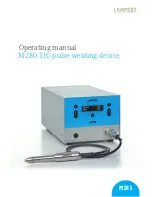
– 21 –
Maintaining the System
Maintaining the System
Maintaining the System
Maintaining the System
INSTALLER CODE ACCESS NOTE:
Normally, the Installer code can perform all system functions, but
some installations may require that the Installer cannot access the system without the end user’s permission.
Ask your Installer if this option is selected. If the Installer code is disabled and the Installer needs to access the
system, the system master or partition master must first enable the Installer code before it can be used. Once
enabled, the Installer code remains active until any other user enters their code.
To enable the Installer code:
master code + [#] + 65
In The Event Of Telephone Operational Problems
In the event of telephone operational problems, disconnect the control from the phone line by removing the plug
from the phone wall jack. We recommend that your installer demonstrate this disconnection on installation of the
system. Do not attempt to disconnect the phone connection inside the control. Doing so could result in the loss of
your phone lines. If the regular phones work correctly after the control
has been disconnected from the phone wall
jack, the control has a problem and you should immediately call for service. If upon disconnection of the control,
there is still a problem on the phone line, notify the Telephone Company that they have a problem and request
prompt phone repair service. The user may not under any circumstances attempt any service or repairs to the
security system. Repairs must be made only by authorized service (see the LIMITED WARRANTY statement for
information on how to obtain service).
Replacing Batteries in
Wireless Sensors
Wireless sensors
may not have been
used in your
security system
IMPORTANT:
Use only batteries
recommended by
your installer as
replacement.
Each wireless sensor in your system has a 9-volt or 3-volt battery. The system detects a
low battery in wireless sensors, including smoke detectors, the personal emergency
transmitter, and the portable wireless keypad and displays a low battery message*. (A
low battery in a portable wireless keypad is detected as soon as one of its keys is
pressed and is displayed as
00
.). Battery-operated smoke detectors with a low battery
also emit a single "chirp" sound approximately once every 20–30 seconds.
Alkaline batteries provide a minimum of 1 year of operation, and in most units and
applications, provide 2–4 years of service. 3-volt lithium batteries provide up to 4 or
more years of operation. Actual battery life will depend on the environment in which the
sensor is used, the number of signals that the transmitter in the sensor has had to send,
and the specific type of sensor. Factors such as humidity, high or low temperatures or
large swings in temperature, may all lead to the reduction of actual battery life in an
installation.
* The low battery message comes on as a warning that battery replacement in the
indicated sensor(s) is due within 30 days. In the meantime, a sensor indicating a low
battery condition is still fully operational.
Routine Care
•
Treat the components of your security
system as you would any other electrical
equipment. Open and close sensor-protected doors or windows gently.
•
Keep dust from accumulating on the keypad and all protective sensors, particularly
on motion sensors and smoke detectors.
•
The keypad and sensors should be cleaned carefully with a dry soft cloth.
Do not
spray water or any other fluid on the units.












































